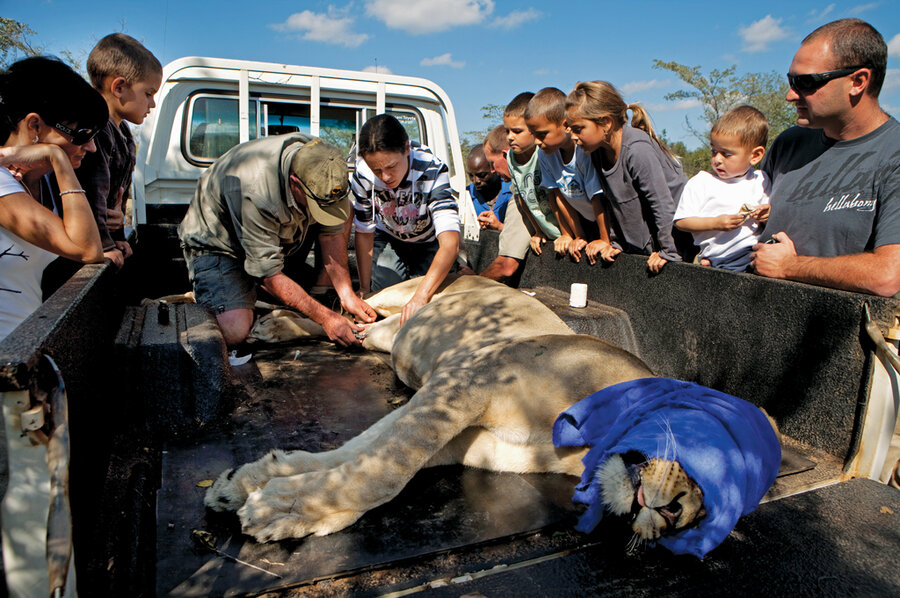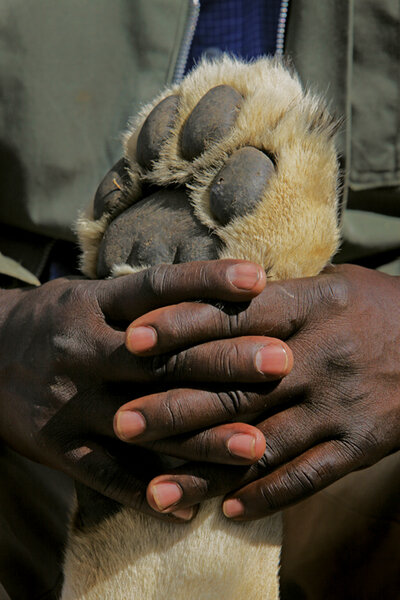When a lion snores ... transmitters are inserted
Loading...
| Rooiberg, South Africa
These lions are not dead. They're sleeping.
Let me explain.
On a recent trip to South Africa, I got an assignment to photograph lions at the Meletse Game Reserve in Limpopo Province. As often happens – far more often than photographers like to admit – the assignment didn't turn out quite as planned.
We start off early: 4 a.m. We're trying to reach lions who are being moved from one game park to another. It's called translocation and it's big business in South Africa. Some parks have excess animals, others have a need for them. But on this day there is fog – thick fog – which makes for slow going. And when the fog thins, we see that there are potholes everywhere. Our driver, Ivan, slows, and dodges them, but now we're running late. Conversation revolves around how many flats occur on this stretch of road.
When the potholes become fewer, Ivan accelerates, trying to make up time. Bam! Bam! A huge one gets us. We have a flat. No, wait, we have two flats. With the help of a kind local farmer, the two wheels are taken to a relatively nearby tire store. We wait for their return. It seems like hours. I pace back and forth, back and forth, like the expectant fathers in the waiting rooms in old movies. My opportunity to photograph the lions is vanishing before my eyes. I'm probably missing the whole thing. I want to cry.
Tires fixed, wheels on, we're off again. We get to the reserve more than three hours late, but we haven't missed the whole thing. The lions are already sedated and lying in the back of pickup trucks, but I will get to photograph them getting transmitters inserted into their abdomens so the owners always know their locations.
It's incredible to be so close to a lion – to pet her, touch her claws, whisper in her ear how beautiful she is.
That night, I awake with a start. I realize all the sleeping lions in my photographs look dead. I promise you, they're doing fine. I just wish I had the photos to prove it.







